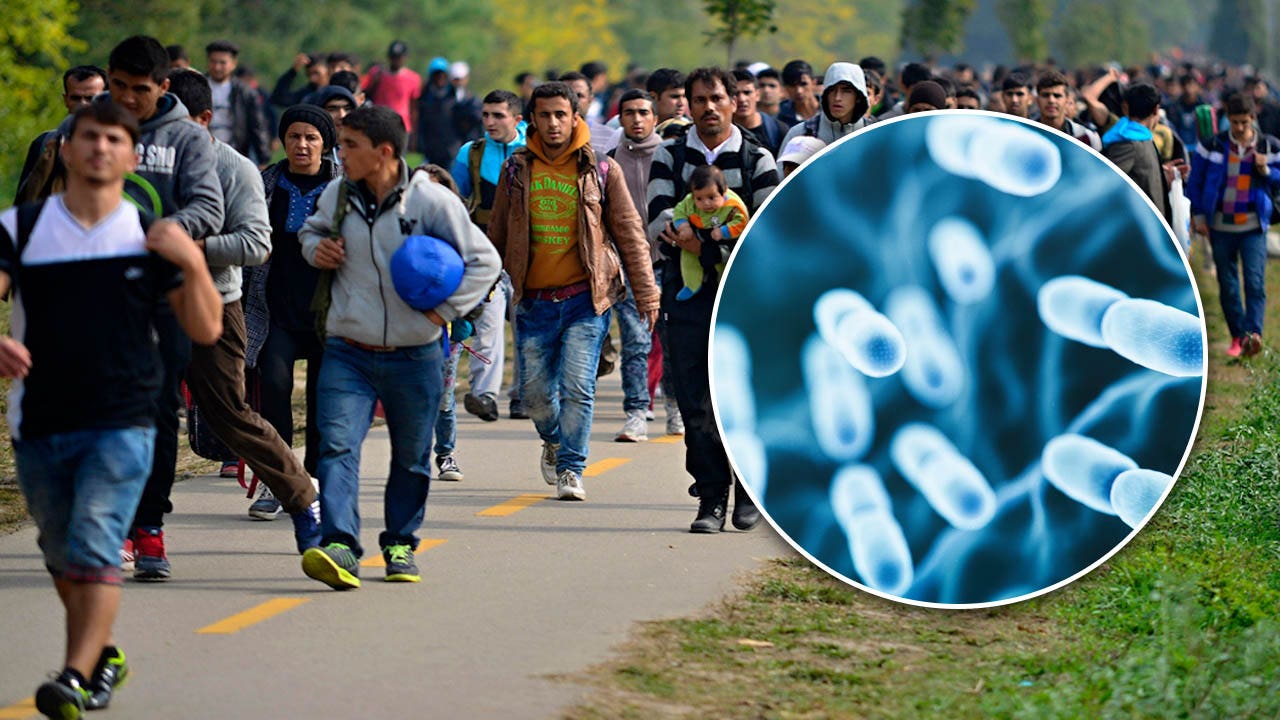According to the Centers for Disease Control and Prevention (CDC), cases of tuberculosis (TB) in the U.S. have increased in 2022. This infectious disease surpasses all others in terms of fatalities. Some doctors suggest that the limitations on testing at the border may be contributing to this surge. In 2021, nearly 11 million people worldwide were infected with TB and it caused 1.6 million deaths, according to the World Health Organization (WHO).
TB is a highly contagious disease caused by a bacterial infection that primarily affects the lungs, but can also impact other areas like the brain, kidneys, and spine. The CDC mandates testing for tuberculosis for all refugees aged two and above before they enter the U.S. If refugees are diagnosed with an inadmissible condition, they cannot leave for the U.S. until they have received treatment.
The CDC utilizes the Electronic Disease Notification (EDN) system to inform federal, state, and local health departments about immigrants and refugees with medical conditions that require follow-up. However, there are limitations to this system. It only collects information for about 10% of immigrants who have an overseas medical classification. Human error may lead to underestimates of immigrants with medical classifications, as data transfer relies on staff at ports of entry to handle and route paper forms accurately.
Although health departments are encouraged to share immigrants’ test results with the CDC, there is still a possibility of underreporting. The CDC does not track diseases by immigration status but maintains comprehensive surveillance systems to monitor communicable diseases within the U.S.
Tuberculosis is prevalent in Texas, especially in cities like Houston, which is a major international port of entry. The majority of imported TB cases seen at Memorial Hermann Health System come from Africa and the Indian subcontinent. Early screening allows for treatment before the development of severe pneumonia.
A study conducted in Texas analyzed tuberculosis patients crossing into the U.S. from Tamaulipas, a Mexican state serving as a migration waypoint. The study found that approximately 30% of immigrants screened positive for tuberculosis over an eight-year period. Immigrants with tuberculosis may face challenges in receiving adequate treatment due to various factors such as mobile living conditions, economic constraints, fear of deportation, and host countries’ policies on providing free TB therapies.
There is concern that drug-resistant strains of tuberculosis may be entering the U.S. through immigrants. Immigrants who test positive for TB are more likely to have drug-resistant types due to incomplete treatment with over-the-counter medications and antibiotics available in Mexico and Central and South American countries. Tuberculosis treatment requires specialized and complex regimens, and the use of over-the-counter antibiotics that only partially treat TB can lead to the emergence of resistance.
Tuberculosis exposure is common, but not everyone infected will develop the disease. New infections occur through the airborne transmission of bacteria when infected individuals cough or sneeze. Most infected people have no symptoms and are not contagious (latent tuberculosis), while those with active infections experience symptoms and can spread the disease.
Symptoms of tuberculosis include coughing (sometimes with blood or mucus), chest pain, pain during breathing or coughing, fever, chills, weight loss, night sweats, loss of appetite, and fatigue. Some individuals may develop extrapulmonary tuberculosis, where the infection spreads to other parts of the body. Diagnosis can be made through skin or blood tests, and additional tests like chest X-rays, CT scans, and lab analysis of lung fluid can determine the extent of the infection and its impact on the lungs.
Treatment options vary for latent and active tuberculosis. Latent tuberculosis is typically treated with drugs like rifampin, rifapentine, and isoniazid for three to four months. Active tuberculosis requires additional medications such as pyrazinamide, ethambutol, moxifloxacin, and linezolid. An injectable option called amikacin is also available. Currently, there is no TB vaccine available in the U.S.
Denial of responsibility! VigourTimes is an automatic aggregator of Global media. In each content, the hyperlink to the primary source is specified. All trademarks belong to their rightful owners, and all materials to their authors. For any complaint, please reach us at – [email protected]. We will take necessary action within 24 hours.


